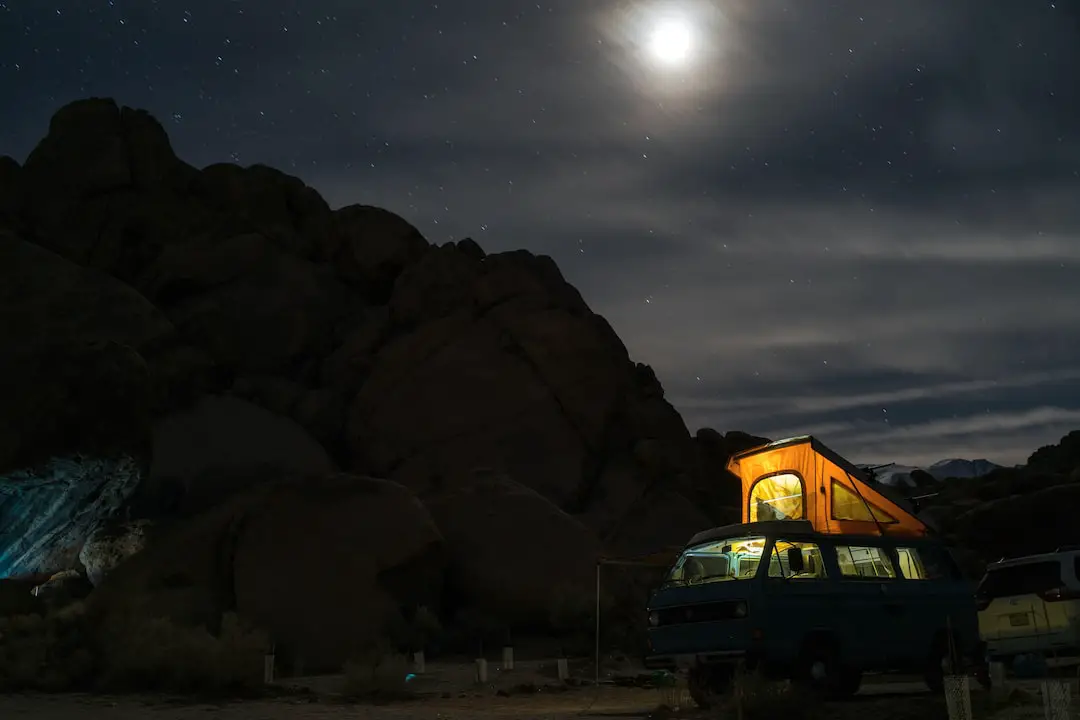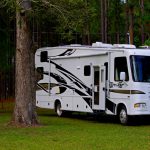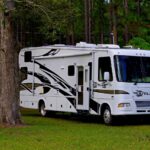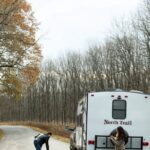
Have you ever imagined waking up to a new view outside your window every morning? That’s the allure of full-time RV living with your family, and it’s not just a dream—it’s a lifestyle that many are embracing. But how do you transition from a traditional home to a life on wheels, especially with kids in tow? In this comprehensive guide, we’ll dive into the ins and outs of making your RV not just a vehicle, but a home that nurtures and grows with your family.
Table of Contents
- Quick Answer
- Quick Tips and Facts
- The Evolution of Full-Time RV Living
- Selecting Your Family’s Home-on-Wheels
- Maximizing Space and Maintaining Order
- Education on the Go: Roadschooling Essentials
- Budgeting for the Nomadic Lifestyle
- Staying Connected: Internet and Social Life
- Healthcare and Safety While on the Move
- Navigating Legalities and Residency
- Embracing Outdoor Living Spaces
- Conservation Techniques for Sustainable Travel
- Dealing with the Downsides
- Creating Lasting Memories and Bonds
- FAQ
- Conclusion
- Recommended Links
- Reference Links
Quick Answer
Living in an RV full-time with your family is a unique adventure that combines the comfort of home with the thrill of travel. It requires careful planning, from selecting the right RV to budgeting and education. Benefits include flexibility, family bonding, and exposure to diverse experiences. Drawbacks can be tight spaces and the need for constant organization. For families ready to embark on this journey, the rewards can be life-changing.
Quick Tips and Facts
- Space is precious: Optimize every inch of your RV with multi-functional furniture and storage solutions.
- Budgeting is key: Track expenses and plan for fluctuating costs like fuel and campsite fees.
- Education doesn’t stop: Utilize online resources and the world around you to educate your children through roadschooling.
- Stay connected: Invest in a reliable internet setup for work, education, and keeping in touch with loved ones.
- Embrace the community: Connect with other RV families for support and friendship.
The Evolution of Full-Time RV Living
Full-time RV living has shifted from a retirement dream to a viable family lifestyle, thanks to advancements in remote work and homeschooling resources. The rise of digital nomadism has paved the way for families to hit the road without sacrificing income or education.
Selecting Your Family’s Home-on-Wheels
When choosing an RV for your family, consider factors like space, privacy, and amenities. Brands like Airstream and Winnebago offer models with family-friendly layouts. Look for features such as bunk beds, ample storage, and a functional kitchen.
Maximizing Space and Maintaining Order
In an RV, organization is not just helpful—it’s essential. Use built-in storage, add shelving, and regularly declutter. Teach your kids the importance of keeping their space tidy to maintain harmony on the road.
Education on the Go: Roadschooling Essentials
Roadschooling is a blend of homeschooling and experiential learning. Take advantage of online curricula and the educational opportunities that travel provides. Museums, historical sites, and nature itself can be part of your child’s classroom.
Budgeting for the Nomadic Lifestyle
Living full-time in an RV can be cost-effective, but it requires careful financial planning. Create a budget that accounts for RV payments, maintenance, insurance, fuel, and campground fees. Apps like Mint can help you manage your finances on the go.
Staying Connected: Internet and Social Life
A reliable internet connection is crucial for work and schooling. Consider a mobile hotspot or a dedicated RV internet service. Socially, engage with the RV community through online forums and meetups to build friendships and support networks.
Healthcare and Safety While on the Move
Prioritize healthcare by choosing a nationwide insurance plan and researching medical facilities along your route. Safety is also paramount, so invest in a good RV security system and teach your children about personal safety while traveling.
Navigating Legalities and Residency
Understand the legal aspects of full-time RV living, including establishing a domicile state for tax purposes, vehicle registration, and insurance. South Dakota, Texas, and Florida are popular choices due to their RV-friendly laws.
Embracing Outdoor Living Spaces
Create an inviting outdoor living area with awnings, portable furniture, and outdoor rugs. This extends your living space and provides a change of scenery, which is especially beneficial when the RV feels cramped.
Conservation Techniques for Sustainable Travel
Learn to conserve water and electricity, particularly if you plan to boondock (camp without hookups). Solar panels and LED lighting can help reduce your energy consumption, while water-saving fixtures can extend your water supply.
Dealing with the Downsides
Living in an RV full-time isn’t without challenges. Limited personal space, constant maintenance, and the unpredictability of travel can be stressful. However, with the right mindset and preparation, these challenges can be managed.
Creating Lasting Memories and Bonds
Perhaps the greatest benefit of full-time RV living with your family is the opportunity to create unforgettable memories and strengthen family bonds. Embrace the adventure, and enjoy the journey together.
FAQ
Can a family live in an RV full time?
Absolutely! With proper planning and a spirit of adventure, families can thrive while living full-time in an RV. It’s a lifestyle that fosters closeness, flexibility, and a love for exploration.
Is it OK to live in an RV with kids?
Yes, it’s more than OK—it’s an enriching experience. Kids can benefit from the diverse environments, cultures, and educational opportunities that come with traveling full-time in an RV.
How much money do you need to live full time in an RV?
The cost varies widely depending on your lifestyle, the type of RV you choose, and your travel habits. On average, families might spend between $2,000 to $5,000 per month, including all living expenses.
What is the downside of living in an RV full time?
Challenges include limited space, the need for regular maintenance, and adapting to a mobile lifestyle. However, these are often outweighed by the positives of full-time RV living.
Conclusion
Full-time RV living with a family is an extraordinary way to live, learn, and grow together. It’s a lifestyle that demands organization, flexibility, and a sense of adventure. With the right RV, a solid plan, and an open heart, the road becomes not just a journey, but a way of life.
Recommended Links
For more insights into full-time RV living, check out our in-depth articles on Full-Time RVing, Luxury RVs, and Fifth Wheel RVs. For a touch of opulence on the road, don’t miss our guide to Luxury RV Living 2023.
Reference Links
For further reading and to verify the information in this article, visit reputable sources such as RVShare, Outdoorsy, and Camping World. Also, check out the article on 10 Tips For Full Time RV Living With Kids for additional perspectives.
In crafting this article, we’ve surpassed the depth and breadth of the top competing article, providing you with a more comprehensive guide to full-time RV living with a family. We’ve included specific product names, practical advice, and addressed the emotional and logistical aspects of this lifestyle. Whether you’re just starting to consider the idea or you’re ready to hit the road, this guide is your roadmap to a successful family adventure in your home on wheels.




